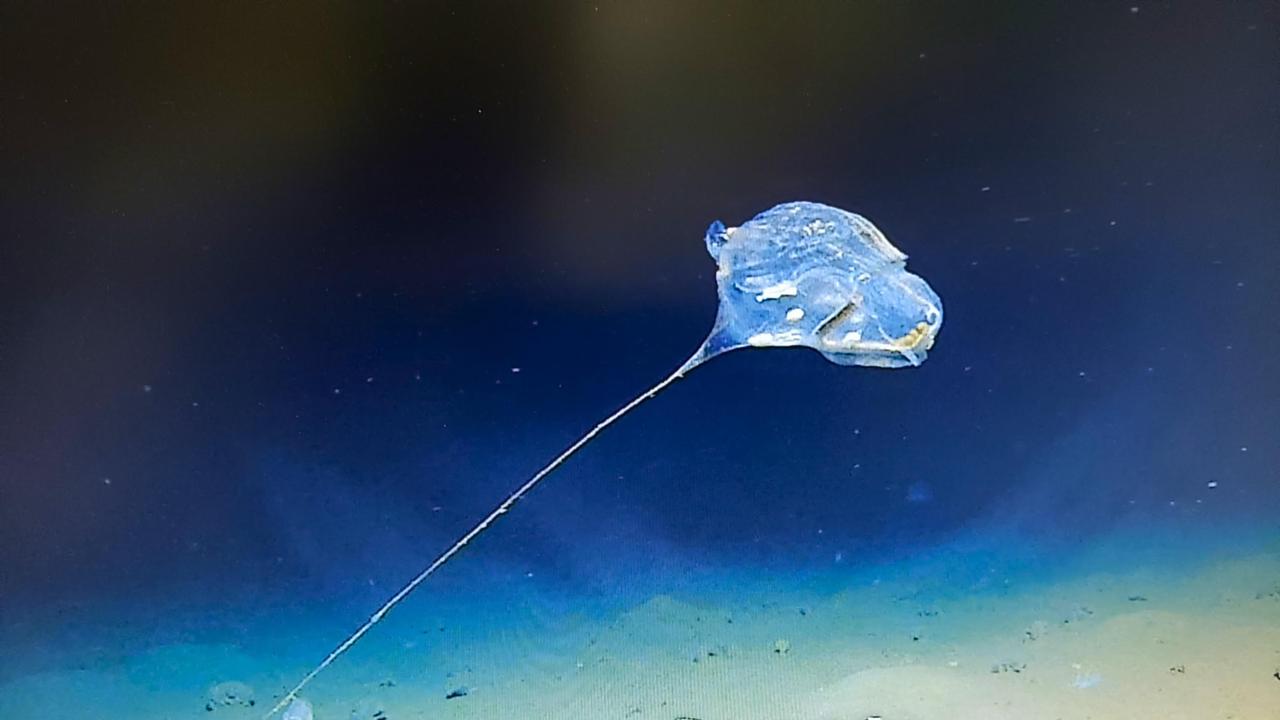Diver breaks record with deepest submarine voyage ever recorded
It was the voyage to the deepest trench in the ocean. But when Victor Vescovo made it to the bottom, he made a heartbreaking find.
It was the voyage to break the record for the world’s deepest ocean dive.
But at the bottom of the Mariana Trench in the Pacific, in among the discovery of new sea creatures and other marine life, Victor Vescovo came across something far more surprising — and concerning — during his four-hour excursion.
At the bottom of the 11km trench sat small piles of rubbish and lolly wrappers. Humanity’s waste had reached the deepest parts of the sea floor.

Mr Vescovo journeyed 10,927 metres to the bottom of the Challenger Deep as part of a mission to explore the world’s deepest underwater places.
His voyage took place in a submarine called The Limiting Factor, which is how Mr Vescovo is able to explore some of the most remote places on the planet.
One of the key objectives of the mission — along with discovering new sea creatures — is to create surveys of the undiscovered trenches below.
In an interview with CNN, the American diver said his team were going to perform tests on the creatures to determine the percentage of plastics found in them.

“I crisscrossed all over the bottom looking for different wildlife, potentially unique geological formations or rocks, man-made objects, and, yes, trying to see if there was an even deeper location than where the Trieste went all the way back in 1960,” Mr Vescovo said, noting some of the marine life discovered included “vibrantly colourful” rocky outcrops that could be chemical deposits, prawn-like supergiant amphipods, and bottom-dwelling Holothurians, or sea cucumbers.


According to CBS, the first deep dive into the Mariana Trench was in 1960, when US Navy Lieutenant Don Walsh and Swiss engineer Jacques Piccard ventured into the deep abyss of the Pacific Ocean. In 2012, movie director James Cameron made a solo trip into the Mariana Trench, however Mr Vescovo’s team broke Cameron’s previous records by about 11 metres.

But the journey isn’t as simple as it sounds. According to the BBC, the pressure at the bottom of the ocean is equal to about 50 jumbo jets piled on top of a person.
“It is almost indescribable how excited all of us are about achieving what we just did,” Mr Vescovo told BBC News.
“This submarine and its mother ship, along with its extraordinarily talented expedition team, took marine technology to a ridiculously higher new level by diving — rapidly and repeatedly — into the deepest, harshest, area of the ocean.”
Mr Vescovo’s latest dive is part of the “Five Deeps expedition”, where he is attempting to explore the deepest parts of all five oceans.
Last month, the voyage went to the murky waters of the Java Trench where they discovered A strange and mysterious creature in the depths of the Indian Ocean. Mr Vescovo — who also pioneered the expedition — said the jellyfish-like creature “does not resemble anything seen before”, with colleague Alan Jamieson noting the jellyfish discovery was a “curve ball” and a truly unexpected find during the expedition.

“I normally have a pretty fair idea of what we’re going to see — but every now and again you get thrown this curve ball,” Dr Jamieson told CNN TRAVEL.
“It really looks artificial — it rolls out the darkness and suddenly it turns and you’re like, ‘Jesus, that’s some kind of weird jellyfish.’
“We came to a conclusion it’s called a tunicate, which is a sea squirt. This particular one is called, we think, an ascidian,” he explains.

According to a release on the expedition, the team managed to capture footage from the sub and from the landers of what are believed to be entirely new species, yet unseen by humans.
Dr Jamieson said the “rare and unique observations” were a “really significant moment”.
“It is not often we see something that is so extraordinary that it leaves us speechless,” he said. “At this point we are not entirely sure what species it was, but we will find out in due course.”



